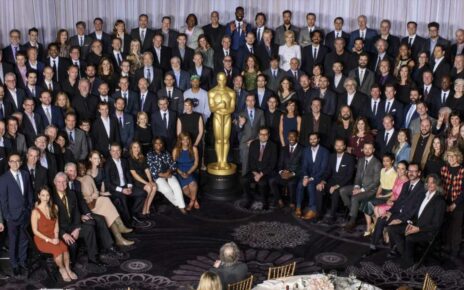All the elements are there: a forgotten but fascinatingly tragic, true-life story about a world-changing medical discovery that saved the lives of millions; a large-cast, grand-scale production including dancers and onstage musicians; and Mark Rylance on stage in a no-hold-barred performance. Yet despite remarkably fierce energy from everyone involved, most particularly Rylance, the bio-drama “Dr. Semmelweis” ultimately proves more enervating than exciting.
You would be forgiven for thinking that this play about a maverick, misunderstood savior in the middle of a public health crisis was a direct response to recent world events. In fact, workshops that formed the foundation of the play, the brainchild of Rylance and director Tom Morris (co-director of “War Horse”), predated the COVID-19 pandemic. Nonetheless, the events of very recent history adds considerable perspective to an already important story, dramatized here by Stephen Brown and Rylance and set in the middle of the 19th century.
Arriving at the doctor’s home in Hungary having not seen Semmelweis for eleven years, two former colleagues beg him to return to Vienna to re-present his findings from all those years ago to a medical conference. His flat-out refusal hints at untold secrets, a state of affairs borne out by the puzzlement of his patient wife (Amanda Wilkin, in a largely thankless role devoid of subtext). As Semmelweis’ wife starts to see that her husband has been hiding the truth of his life from her, the play begins uncovering the reasons behind the suppression of his discovery of the vital role of medical hygiene in infection (before Louis Pasteur discovered and named bacteria), and to revealing the events that caused him to leave the city in extreme disgrace.
From there onwards, we switch between neatly staged flashbacks intercut with returns to the present for his wife to ask further questions in order to move on the acted-out scenes from the past. That, along with the health authorities’ self-interest and stubborn refusal to countenance Semmelweis’ dire warnings, make the play feel like an awkward cross between Ibsen’s “An Enemy of the People” and Peter Shaffer’s “Equus.”
And like “Equus,” which was literally animated by its actors playing horses, and is similarly not a whodunnit but a “why-did-he,” Morris builds imagery, often heavy-handedly, into the explanatory action by adding a whirl of non-literal performance elements.
Members of a female string quartet thread themselves in and out of the action playing snatches of Schubert’s “Death and the Maiden” (arguably too on-the-nose) and a plangent score by Adrian Sutton. Armed with that, and with choreography by former New York City Ballet dancer Antonia Francheschi, dancers, often in elegant, long white tutus recalling Balanchine’s celebrated “Serenade,” invade the action. Semmelweis’ discovery sprang from his extreme concern about the terrible death rates of mothers in the maternity unit at the largest, most famous hospital in Europe, and the dancers represent both the ghosts of women who died following childbirth and also Semmelweis’ increasingly distracted, enraged and deranged state of mind.
Semmelweis is tragic because his character and behavior, although venerable, are increasingly dislikable, and which lead to his demise. It’s a contradiction that Rylance feasts upon to dynamic effect. Without a political bone in his body, Semmelweis rages that his discovery is not acted upon, a behavioral pattern that leads to personal and public disaster. His character’s mind racing faster than his mouth, the actor, quivering, tripping, lashing out, makes the man’s passion and his frighteningly driven thoughts legible. He is the ideal actor to make the case for Semmelweis’ stern mind that changed medical history and also reveal the pitfalls of the unwavering absolutism that costs him everything.
But despite the noble efforts of the surrounding, hard-working cast, almost no one else in the too-flatly written play has much life besides exposition. The exception is Pauline McLynn’s doughty, typically overlooked nurse, who joins up with Semmelweis and finds agency at a point in history where — as the script repeatedly informs us — women had none.
There are vivid moments of discovery and, most especially, the striking collective gestures at the end of each act where idea, production and execution all fuse to dramatic effect. But too often, beneath Rylance’s work and the production pyrotechnics, there is too little to hold on to beyond the retelling of a story and the script’s self-conscious announcements about the resonance of its ideas. Important though they are, their lack of drama makes them wilt. Rylance, as ever, is magnetic, but even Morris’ production cannot disguise the fact that the actor has conceived a better role than a play.
Read More About:
Source: Read Full Article


